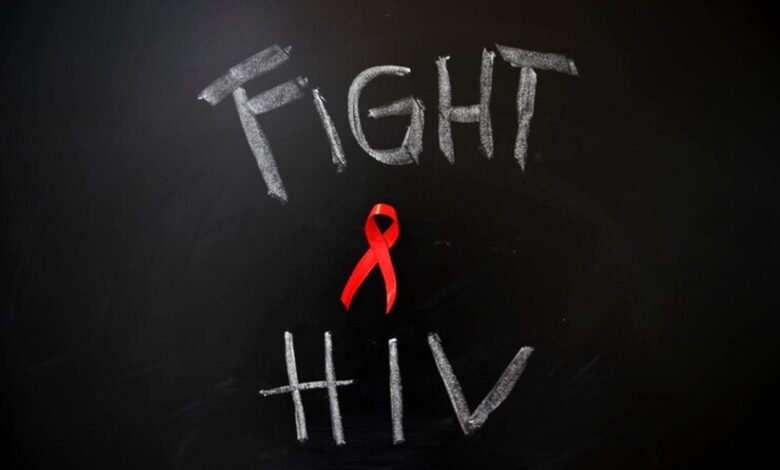Understanding HIV/AIDS Symptoms: A Comprehensive Guide

In the realm of public health, knowledge is not just power; it’s a lifeline. Understanding the symptoms of HIV/AIDS is not only crucial for those who may be at risk but also for society as a whole. Welcome to “Understanding HIV/AIDS Symptoms: A Comprehensive Guide.” In these pages, we embark on a journey to shed light on one of the most pressing health concerns of our time. This guide will serve as your compass, providing a comprehensive and empathetic understanding of the symptoms associated with HIV/AIDS and the profound impact they have on individuals and communities.
Understanding HIV/AIDS Symptoms
HIV/AIDS remains a global health challenge, but with knowledge comes the power to make informed decisions, seek timely medical care, and reduce the stigma surrounding the virus. Through this guide, we aim to equip you with the knowledge needed to recognize the early signs of HIV/AIDS infection, understand the progression of the disease, and appreciate the advancements in prevention and treatment. Whether you’re someone seeking to protect themselves or support a loved one, our goal is to empower you with the information necessary to navigate the complexities of HIV/AIDS with compassion and resilience.
What is HIV/AIDS?
HIV (Human Immunodeficiency Virus) is a virus that attacks the immune system, specifically the body’s CD4 cells (T cells). These cells are essential for helping the immune system fight off infections. When HIV weakens the immune system, the body becomes more susceptible to various infections and diseases.
AIDS (Acquired Immunodeficiency Syndrome) is the final stage of HIV infection. It occurs when the immune system is severely damaged, and the individual becomes vulnerable to opportunistic infections and certain cancers. AIDS is diagnosed based on specific criteria, including a low count of CD4 cells or the occurrence of specific opportunistic infections.
In summary, HIV is the virus that causes AIDS, and the progression from HIV to AIDS is marked by a weakening of the immune system. Early detection, proper medical care, and preventive measures can help individuals with HIV live longer and healthier lives and reduce the risk of transmitting the virus to others.
Read More: Understanding HIV Transmission
The causes of HIV
Understanding HIV/AIDS Symptoms: The causes of HIV (Human Immunodeficiency Virus) are primarily related to its modes of transmission. HIV is mainly transmitted through certain bodily fluids, and understanding these modes of transmission is essential in preventing the spread of the virus:
- Unprotected Sexual Contact: One of the most common modes of HIV transmission is through unprotected sexual contact, especially vaginal or anal intercourse. When one partner is infected with HIV, the virus can be passed on to the uninfected partner through the exchange of bodily fluids such as blood, semen, vaginal fluids, and rectal fluids.
- Sharing Needles: HIV can also be spread when people share needles and syringes, particularly among individuals who use intravenous drugs. Sharing needles can introduce the virus directly into the bloodstream.
- Mother-to-Child Transmission: HIV can be transmitted from an infected mother to her child during pregnancy, childbirth, or breastfeeding. However, with proper medical care and antiretroviral therapy, the risk of transmission from mother to child can be significantly reduced.
- Blood Transfusions and Organ Transplants (Rare): In the past, there were cases of HIV transmission through blood transfusions and organ transplants when appropriate screening measures were not in place. However, stringent screening procedures are now in effect to prevent such transmissions.
- Occupational Exposure: Healthcare workers or first responders may be at risk of HIV transmission if they come into contact with infected blood or bodily fluids through accidental needlesticks or other occupational accidents. Universal precautions and safety measures have reduced the risk in healthcare settings.
- Sexually Transmitted Infections (STIs): Having certain sexually transmitted infections, such as syphilis, herpes, or gonorrhea, can increase the risk of acquiring or transmitting HIV during sexual contact. These infections can cause sores or lesions, making it easier for HIV to enter the body.
- Pre-existing Medical Conditions: Some medical conditions or treatments that weaken the immune system can increase the risk of acquiring HIV if exposed to the virus.
It’s important to note that HIV is not transmitted through casual contact such as hugging, kissing, sharing utensils, or through air, water, or insect bites. Understanding the modes of transmission is vital in preventing HIV infection, and practicing safe behaviors and seeking regular testing can significantly reduce the risk of acquiring or spreading the virus.
Symptoms of HIV
Early Symptoms: In the initial stages of HIV infection, many individuals may experience mild flu-like symptoms within a few weeks to months after exposure. These early symptoms may include:
- Fever
- Fatigue
- Swollen lymph nodes
- Sore throat
- Muscle and joint aches
- Skin rash
- Headache
- Night sweats
Asymptomatic Stage: After the initial symptoms, HIV often enters a prolonged asymptomatic stage, during which the virus replicates in the body but may not cause noticeable symptoms. This stage can last for several years, and individuals may feel generally well during this time. However, HIV is still active and can be transmitted to others.
Advanced Symptoms (AIDS): If left untreated, HIV can progress to AIDS (Acquired Immunodeficiency Syndrome). At this advanced stage, the immune system is severely damaged, and individuals become vulnerable to opportunistic infections and certain cancers. Advanced symptoms of AIDS can include:
- Rapid weight loss
- Chronic diarrhoea
- Pneumonia
- Persistent fever
- Recurrent oral or genital sores
- Skin problems
- Swelling of the lymph nodes
- Cognitive and neurological symptoms
- Severe, persistent fatigue
Opportunistic infections, such as tuberculosis or cryptococcal meningitis
It’s important to note that not everyone with HIV will progress to AIDS, especially if they receive appropriate medical care and antiretroviral therapy (ART). Additionally, some individuals may not experience any symptoms for an extended period.
Early detection of HIV through testing is critical, as it allows for early intervention and treatment to prevent the virus from progressing to AIDS. Timely medical care, including ART, can help individuals with HIV lead healthy lives and reduce the risk of transmitting the virus to others. Regular testing and awareness of one’s HIV status are essential for effective HIV management
Prevention Strategies
Safe Sex Practices:
Condom Use: Consistently and correctly using condoms during sexual intercourse can significantly reduce the risk of HIV transmission. Both male and female condoms are effective barriers against the virus.
Regular Testing: Individuals engaging in sexual activity should undergo regular HIV testing to know their status and take appropriate precautions.
Pre-Exposure Prophylaxis (PrEP):
PrEP involves taking a daily medication, such as Truvada or Descovy, by individuals at high risk of HIV. It can provide substantial protection when used as prescribed, especially for those with HIV-positive partners.
Needle Exchange Programs:
Understanding HIV/AIDS Symptoms: Implementing needle exchange programs can reduce HIV transmission among injection drug users. These programs provide sterile needles and syringes in exchange for used ones, reducing the sharing of contaminated equipment.
Antiretroviral Therapy (ART):
Understanding HIV/AIDS Symptoms: ART is not only a treatment for HIV but also a powerful prevention tool. When individuals with HIV take their medications as prescribed, it can reduce the amount of virus in their bodies to undetectable levels, making it highly unlikely to transmit the virus to others.
Mother-to-Child Transmission Prevention:
Understanding HIV/AIDS Symptoms: Pregnant women with HIV can receive antiretroviral drugs to prevent mother-to-child transmission. Adequate medical care and not breastfeeding when advised can significantly reduce the risk of transmitting the virus to the baby.
Education and Awareness:
Understanding HIV/AIDS Symptoms: Public education and awareness campaigns are crucial in reducing stigma, promoting HIV testing, and encouraging safe behaviours. Knowledge empowers individuals to make informed choices.
Supportive Communities:
Understanding HIV/AIDS Symptoms: Creating supportive communities and organisations that offer resources, counselling, and assistance to individuals living with HIV/AIDS Symptoms can help improve their quality of life and emotional well-being.
Counselling and Testing:
Understanding HIV/AIDS Symptoms: Encourage individuals to seek HIV counselling and testing services regularly, especially if they engage in behaviours that may put them at risk. Knowing one’s HIV status is the first step in managing and preventing HIV.
Contraception and Family Planning:
Understanding HIV/AIDS Symptoms: Providing access to contraception and family planning services can help individuals make informed choices about when and how to have children, reducing the risk of mother-to-child transmission.
Promote Inclusivity and Non-Discrimination:
Understanding HIV/AIDS Symptoms: Create a society that promotes inclusivity and does not discriminate against people living with HIV. Reducing stigma and discrimination encourages individuals to seek testing and care without fear.
Combining these prevention strategies, along with regular testing and early medical intervention, is crucial in reducing the spread of HIV and ensuring that those affected by the virus can lead healthy and fulfilling lives.
Conclusion
In conclusion, understanding HIV/AIDS Symptoms is of paramount importance in our efforts to combat the spread of this virus and provide support to those affected by it. This article has provided a comprehensive overview of the causes, symptoms, and prevention strategies associated with HIV/AIDS, with a focus on the following key points:
We’ve highlighted that HIV (Human Immunodeficiency Virus) is a virus that weakens the immune system, making the body more susceptible to infections. AIDS (Acquired Immunodeficiency Syndrome) is the advanced stage of HIV infection, characterized by severe immune system damage.
FAQs
Can HIV be cured?
No, HIV cannot be cured, but it can be managed with antiretroviral therapy (ART).
How is HIV transmitted?
HIV is primarily transmitted through unprotected sexual contact, sharing needles, and mother-to-child transmission.
What are the early signs of HIV?
Early signs of HIV may include fever, fatigue, and swollen lymph nodes.
Is AIDS the same as HIV?
No, AIDS is the advanced stage of HIV infection, characterized by severe immune system damage.
Is there a vaccine for HIV?
As of now, there is no vaccine for HIV, but ongoing research is being conducted in this area.







